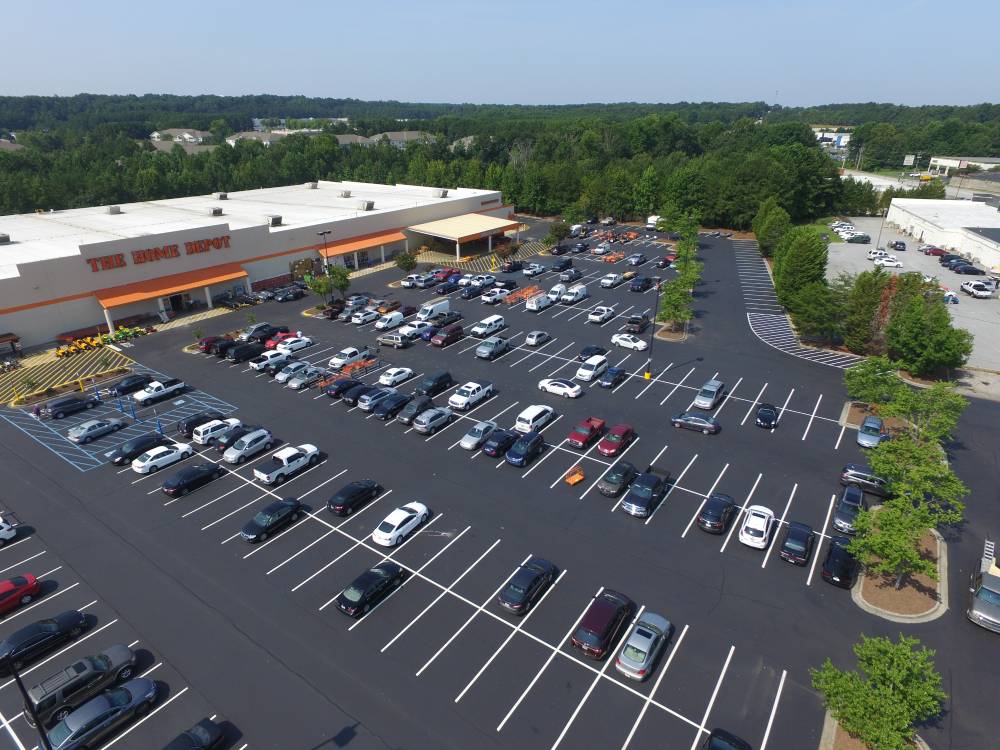Asphalt pavements are known for their economical costs, visual appeal, and durability. As the most popular paving material in North America, asphalt can build a wide variety of pavements, including streets, tennis courts, highways, parking lots, bike and golf cart trails, and walkways. However, asphalt pavements need occasional maintenance to reach their full life expectancy. One of the most critical maintenance procedures is asphalt crack repair, but it is also one that is often overlooked. If your pavement has cracks that need to be repaired, it would be prudent to have them mended before fall arrives.
Why You Should Repair Asphalt Cracks in the Fall
Why Is Asphalt Crack Repair Important?
Asphalt pavements consist of multiple layers of asphalt that are compacted to make them denser and stronger. These layers of asphalt rest on a base of compacted materials and this base must be stable and strong to help the pavement support the weight of the traffic using the pavement. When cracks are not repaired, water enters through the cracks and is pulled downward by gravity. The water will reach the base and erode it, allowing the pavement to sag. Once the pavement begins to subside, existing cracks are enlarged, new cracks form, and potholes or alligator cracking will soon follow. The integrity of the entire structure can be compromised, requiring costly repairs or even a complete reconstruction.
Why Is the Time of Year Important When Repairing Cracks in Asphalt Pavements?
There are some procedures that asphalt paving companies cannot perform year-round. For example, virtually every type of parking lot repair or maintenance procedure requires dry conditions and temperatures within acceptable tolerances if the results are to be satisfactory. Even asphalt crack sealing needs surface and ambient temperatures at least 45 degrees Fahrenheit; if there is any moisture in the crack when the sealant is introduced, the first frost could effectively destroy the repair. The average length of the day can also matter since some products require a certain number of hours of exposure to sunlight to cure correctly.
If I Do Not Repair Cracks Before Fall, What Might Happen to My Asphalt Pavement?
Asphalt pavement is remarkably flexible. It can bounce back from loads, but it also expands and contracts when temperatures fluctuate. The best time to repair cracks is when the pavement is between its minimum and maximum points, and this sweet spot will occur as autumn approaches. Since your parking lot repair contractor will not be able to perform a permanent crack repair once cold temperatures arrive, your pavement will be subjected to water infiltration as well as the effects of its regular horizontal and vertical movements. By spring, you will likely need pothole repair instead of crack repair. You may also need a contractor who offers base repair as one of his paving services.
The Surface Masters Can Deliver the Paving Services You Need
The Surface Masters has the experience, equipment, and skills to help you get the longest life possible for your asphalt pavement. Our paving services include asphalt crack sealing, pavement markings, sealcoating, asphalt paving, curbing and concrete work, and asphalt repair. We deliver exceptional results at affordable prices. Contact us for a free, no-obligation quote by submitting the online form or calling our Marietta office at 770-250-6392.


